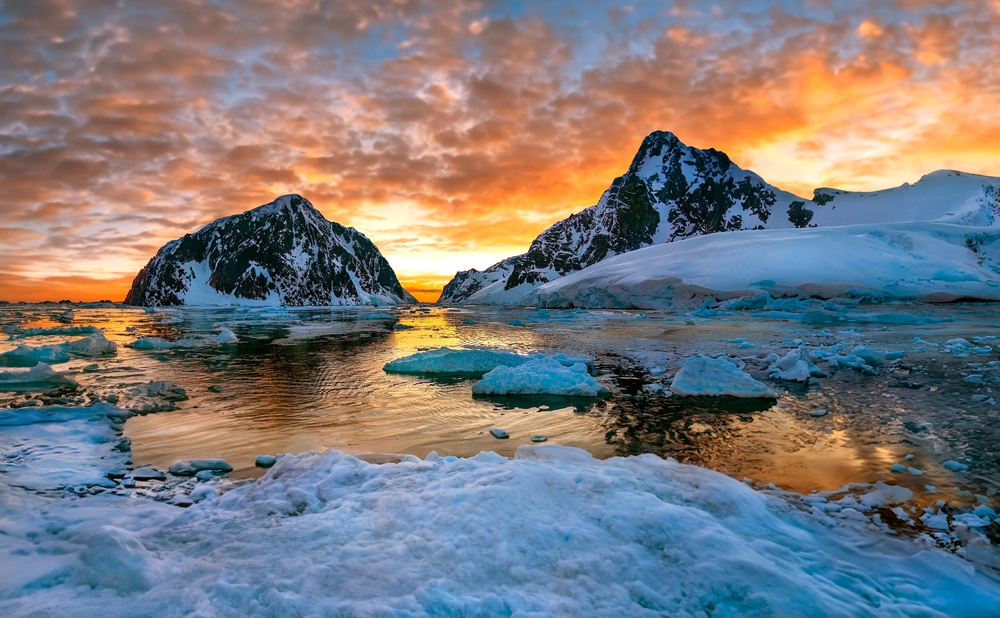Celestin Pepin is a financial data analyst who also serves as a first lieutenant in the Swiss Armed Forces. Mr. Pepin has travelled the world, and he visited a U.S. base in Antarctica with a ship that brought scientific personnel when he was just five years old. This article will look at the U.S. Antarctic Program (USAP), a scheme managed by the U.S. National Science Foundation (NSF) that supports scientific research and education in Antarctica.
The coldest, highest, driest, windiest and most remote continent on the planet, Antarctica is a pristine natural wilderness protected by the Antarctic Treaty Consultative Parties (ATCP). The ATCP have developed measures to conserve living resources throughout the region and protect the environment, with the United States having enacted laws and regulations to support these measures.
USAP represents the United States in Antarctica, carrying forward U.S. goals and supporting the Antarctic Treaty while striving to encourage international cooperation and maintain an active and influential presence in the region. USAP facilitates high-quality scientific research in Antarctica, all while sustaining funding efficiency.
USAP was founded in 1959, following the International Geophysical Year, which saw 12 nations establish 50 research stations in Antarctica. Joining forces with 11 other nations, the United States signed the Antarctic Treaty, an international pact designed to ensure that Antarctica is dedicated solely to peaceful activities, remaining free from international conflict. To date, some 58 nations in total have pledged to uphold this treaty. The original 12 signatories were the United States, Russia (then the USSR), Japan, New Zealand, Australia, Chile, Argentina, South Africa, the United Kingdom, France, Belgium, and Norway.
Individuals participating in USAP must work within U.S. regulations designed to protect Antarctica and its resources for future generations. In addition to the Antarctic Conservation Act, which protects native plants, animals, and their habitats, participants in USAP must adhere to stipulations set out in the following:
- The Protocol on Environmental Protection to the Antarctic Treaty
- The Commission for the Conservation of Antarctic Marine Living Resources
- Antarctic Specially Protected Areas Information
- The Convention for the Conservation of Antarctic Seals
The Antarctic Treaty provides a regulatory framework for international cooperation in Antarctica, enabling different nations to continually support each other in logistics and scientific projects across this geographically remote continent. Antarctica’s extreme environment and isolated location make it a prime location for unique research that it is impossible to replicate elsewhere. Funded by the NSF and other federal agencies, these studies span various disciplines, including biology, earth science, glaciology, geology, oceanography, marine biology, atmospheric sciences, and astronomy.
The key objectives of USAP are to advance scientific understanding of Antarctica and its ecosystems by studying the continent’s influence on global systems, including climate. By utilizing Antarctica’s unique conditions, USAP creates scope for exclusive research opportunities.
USAP operates various research stations year-round, including NSF Palmer Station, NSF Amundsen-Scott South Pole Station, and NSF McMurdo Station. The latter research station is the largest on Antarctica. Serving as a central logistical hub for USAP, NSF McMurdo Station supports research across the continent.
USAP’s research vessel, NSF RVIB Nathaniel B. Palmer, is its flagship icebreaker. The vessel’s berthing and icebreaking capacity combined with its advanced scientific capabilities make it unique in NSF and within the entire U.S fleet of scientific research vessels.
Approximately 3,500 Americans participate in USAP research projects each year, with women accounting for around 30% of the workforce. Somewhere in the region of 500 scientists conduct studies on board USAP research ships annually, supported by field camps that are operational from October to February, Antarctica’s summer season.
USAP’s activities are supported by the New York Air National Guard 109th Airlift Wing and the Joint Base Lewis-McChord in Washington’s 62nd Airlift Wing. Support in the form of smaller aircraft is also provided by the U.S. Department of the Interior’s Office of Aviation Services, while icebreaking is supported by the USCGC Polar Star and the U.S. Coast Guard.




